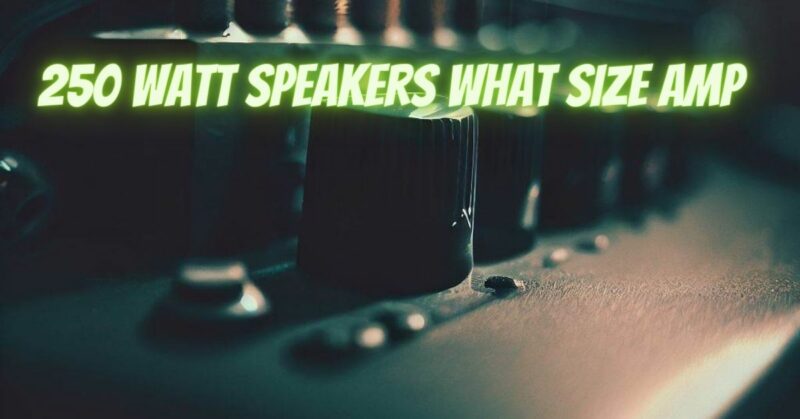Choosing the correct amplifier to pair with your speakers is a crucial step in creating a well-balanced audio system with optimal sound quality. When dealing with 250-watt speakers, finding the right size amp is essential to ensure that the speakers can perform to their full potential without risking damage. In this article, we will explore the factors to consider when matching an amplifier to 250-watt speakers to achieve the best possible audio experience.
Understanding Speaker Wattage and Amplifier Power
The wattage of speakers refers to the maximum power they can handle without getting damaged. In the case of 250-watt speakers, this means they can withstand a maximum input power of 250 watts. However, it’s important to note that the speaker’s wattage rating does not directly translate to their volume capability; it merely indicates their power-handling capacity.
On the other hand, the amplifier’s power rating indicates how much power it can deliver to the speakers. It is essential to match the amplifier’s power output to the speaker’s power handling to prevent any potential damage and ensure that the speakers can perform optimally.
Considerations When Choosing an Amplifier
- Match the Impedance: Check the impedance (measured in ohms) of the speakers and ensure that the amplifier’s output impedance is compatible. Most speakers have a nominal impedance of either 4 ohms or 8 ohms. Choose an amplifier that can handle the impedance of your speakers to ensure a stable and efficient audio connection.
- RMS Power: Look at the RMS (Root Mean Square) power rating of both the speakers and the amplifier. RMS power indicates the continuous power handling capability and is a more reliable measure than peak power. Match the RMS power of the amplifier to the RMS power of the speakers for balanced and accurate performance.
- Consider Headroom: Providing some headroom in the amplifier’s power output is beneficial. Headroom allows the amplifier to operate with ease and reduces the risk of distortion when driving the speakers close to their maximum capacity. Choosing an amplifier with slightly more power than the speaker’s rating can help achieve a cleaner and more dynamic sound.
- Speaker Sensitivity: Consider the sensitivity rating of the speakers, which indicates how efficiently they convert power into sound. Speakers with higher sensitivity ratings require less power to produce the same volume level. Matching the amplifier to the speaker’s sensitivity helps optimize the sound output and ensures efficient use of power.
- Listening Environment: The size and acoustics of the room where the speakers will be used should also be taken into account. Larger rooms or venues may require a more powerful amplifier to deliver adequate sound coverage and volume.
Choosing the right size amplifier for 250-watt speakers is essential for achieving optimal sound quality and ensuring the longevity of the speakers. Matching the impedance, RMS power, and sensitivity of the speakers and amplifier is crucial for creating a well-matched audio system. Providing some headroom in the amplifier’s power output can also contribute to cleaner and distortion-free sound.
Ultimately, finding the perfect balance between amplifier power and speaker capabilities will result in a harmonious audio experience with clear, dynamic, and rich sound reproduction. By considering these factors and selecting the appropriate amplifier, you can fully enjoy the capabilities of your 250-watt speakers and create a delightful listening environment for all your audio endeavors.


